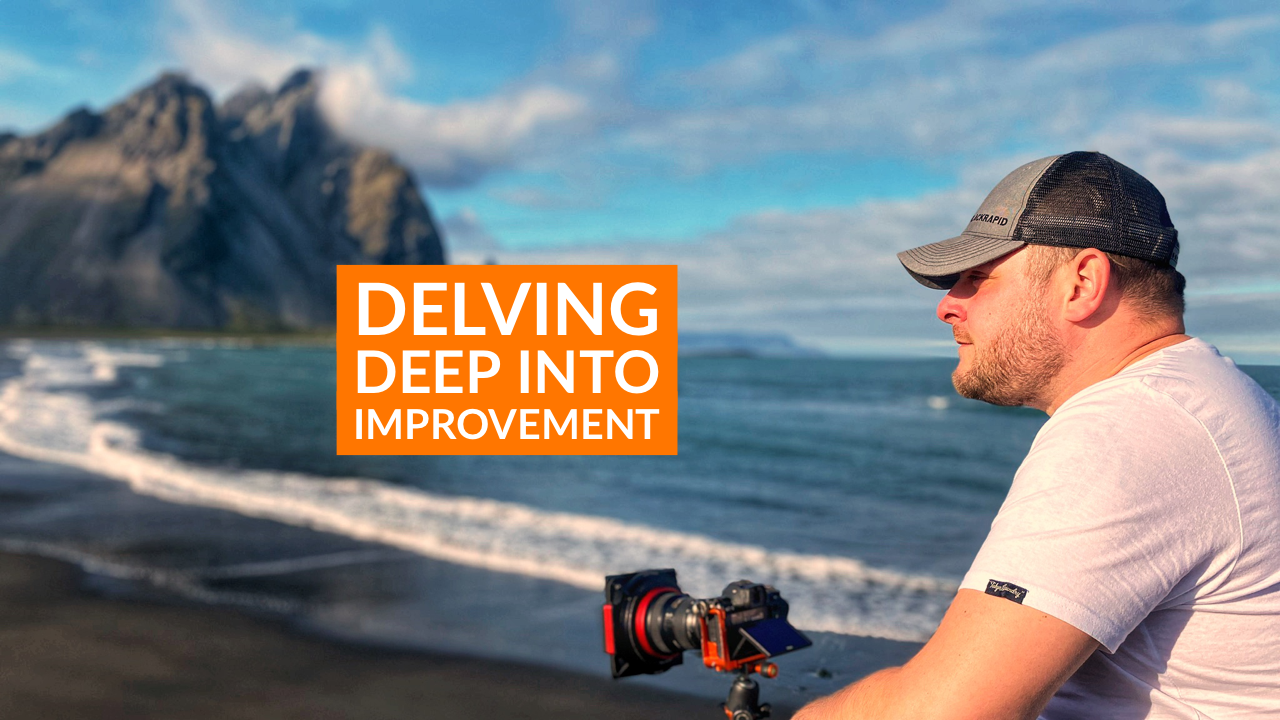
Focus Your Fall Portfolio:
Work with a Theme to Create a Unique Collection of Images
When autumn photography season approaches, I start to anticipate the making of new photographs. I have some ideas to share that may help you develop an excellent portfolio for the fall season. I have found it useful, for myself and for teaching my students, to think about creating a story line, or clear thematic focus, for your work.
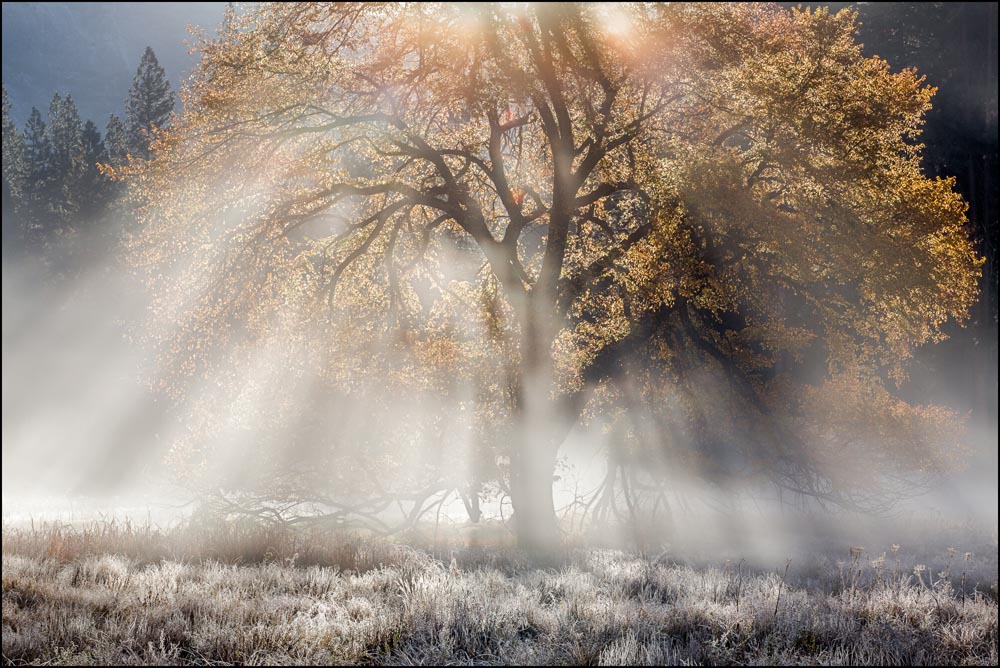
Consider what specific locations or aspects of autumn inspire you the most. The location could be your backyard, a nearby park or reserve, or a travel location where you can spend at least a few days to explore the area fully. A favorite aspect might include colorful reflections, or the patterns of fallen leaves, or a series focused on branch-filled tapestries of color. This approach of specialization will help distinguish your autumn images from other photographers’ work.
Two key elements needed for your selection of an autumn theme are passion for the subject and easy access during the season. Passion is a must-have ingredient for creative, insightful imagery. Repeated access to your location will build your knowledge of the light, weather, and seasonal changes, helping you find the best conditions for making great photographs. One idea would be to photograph the transition of autumn in your area, from the first hints of color in green trees to the last clinging leaves. This transition offers us great opportunities to communicate that visceral sense we all feel of time and the season moving forward.
Instead of trophy hunting for singular, spectacular scenic images, I like to explore around for quiet images, ones that don’t shout too loud. In Yosemite, for example, I often find exciting details on the forest floor, in river reflections, or on cliff faces. Finding unique images often involves photographing small sections of the landscape rather than the wide views. However, even though I usually focus on intimate details, that doesn’t mean I will avoid those epic, rare events where weather and/or light explode with drama and energy.
I have included some examples here from recent seasons in Yosemite Valley. Over a two-week period in late October and early November, I worked with private students in Yosemite Valley. I greatly enjoy the one-on-one process of helping photographers find their own vision, and sharing mine with them.
On one dramatic morning, an amazing confluence of peak autumn color and morning mist rising off a frosted meadow unfolded before my student and me. We started out photographing from one excellent vantage point, then raced to where the sun was directly behind the extraordinary tree pictured in the opening image, where we witnessed sunbeams bursting through the graceful branches.
Knowing that the mist would burn off soon, we worked rapidly to find the best camera position for him to block the rising sun with the tree’s limbs. Even though the lens was shaded, the high contrast and rapidly changing situation called for bracketing exposures to ensure a full range of data was captured. The end result, for both of us, were top portfolio “keepers” that portray the symbolism of “a new day,” and “light shining through the darkness.”
But just as exciting to me were several quiet Yosemite images I photographed that fall. In my opinion, quiet intensity in an image can endure and engage the viewer for longer. With subtle imagery comes a depth that can be enjoyed more over time.
When I pull together a group of photographs, such as from that autumn, I edit the collection by looking for the highest and most consistent quality, as well as for a balance of scale, light, weather, and subject matter. I might use a few wide-angle views to set the context of the portfolio as Yosemite Valley.
However, my main focus would be my intimate landscapes, such as the river with tree reflections, or leaves floating through autumn-colored river reflections, as shown in the photograph Maple Leaves Along the Merced River. When you see the selected images as a group, such as in an exhibit or online gallery, they should create a visual story, a personal exploration, a creative viewpoint.
YOSEMITE AUTUMN
Here I have created a small selection of recent autumn photographs from Yosemite.
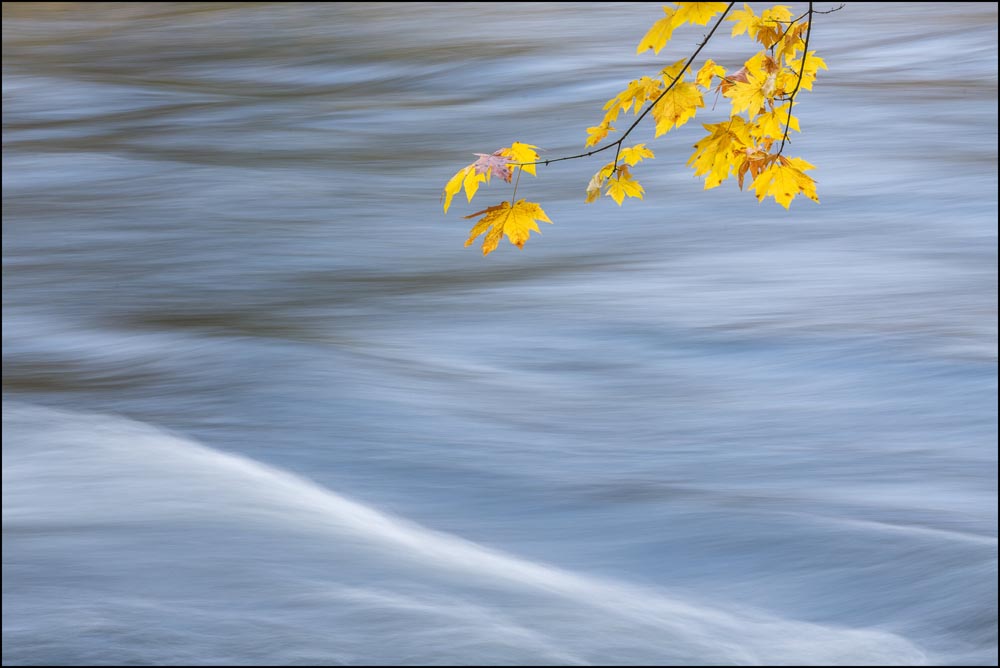
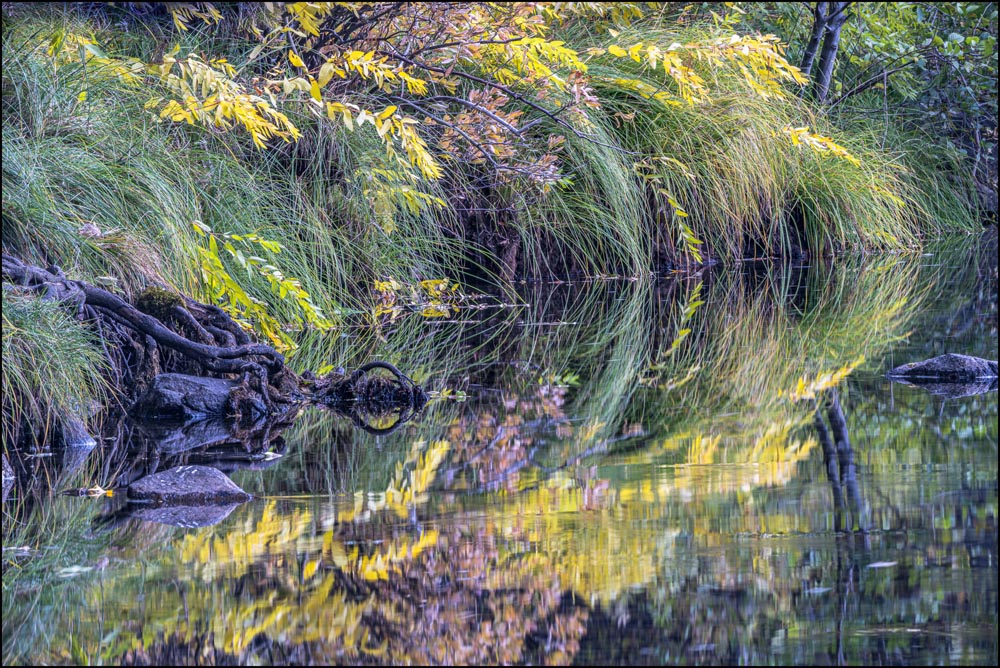
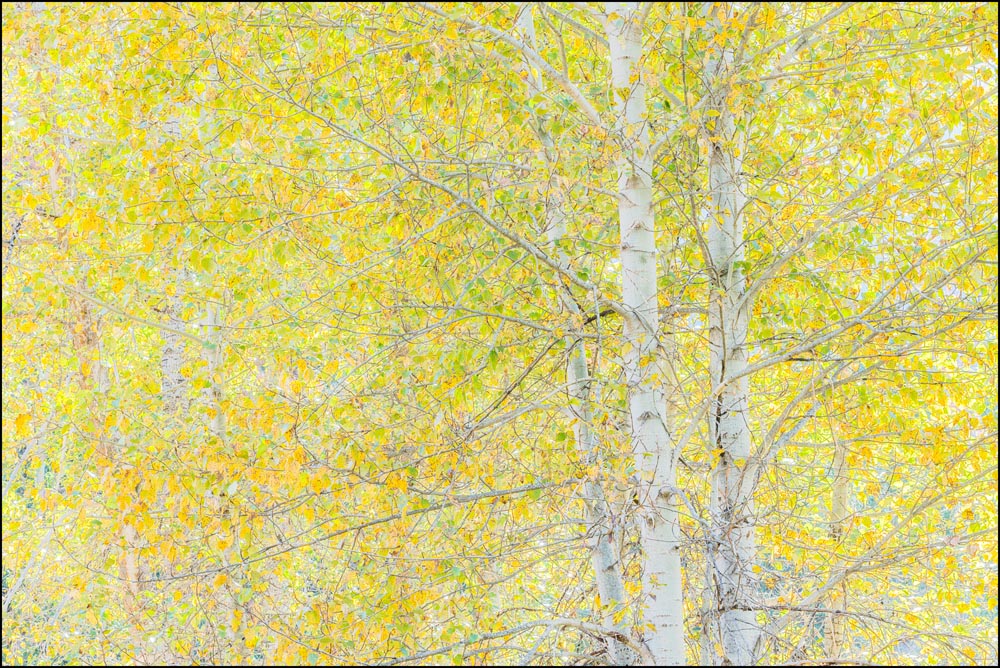
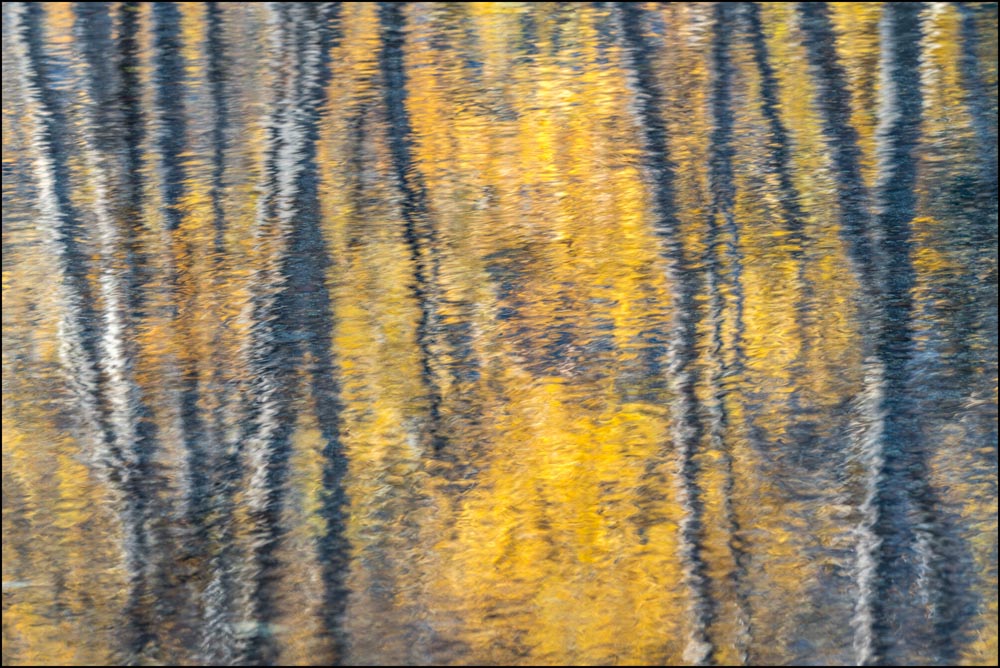
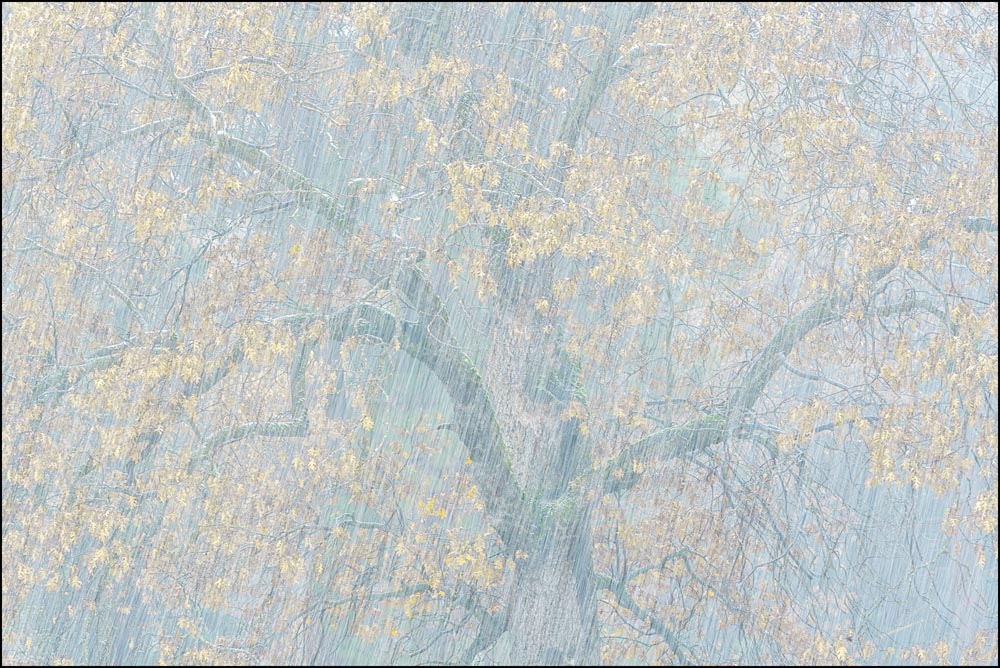
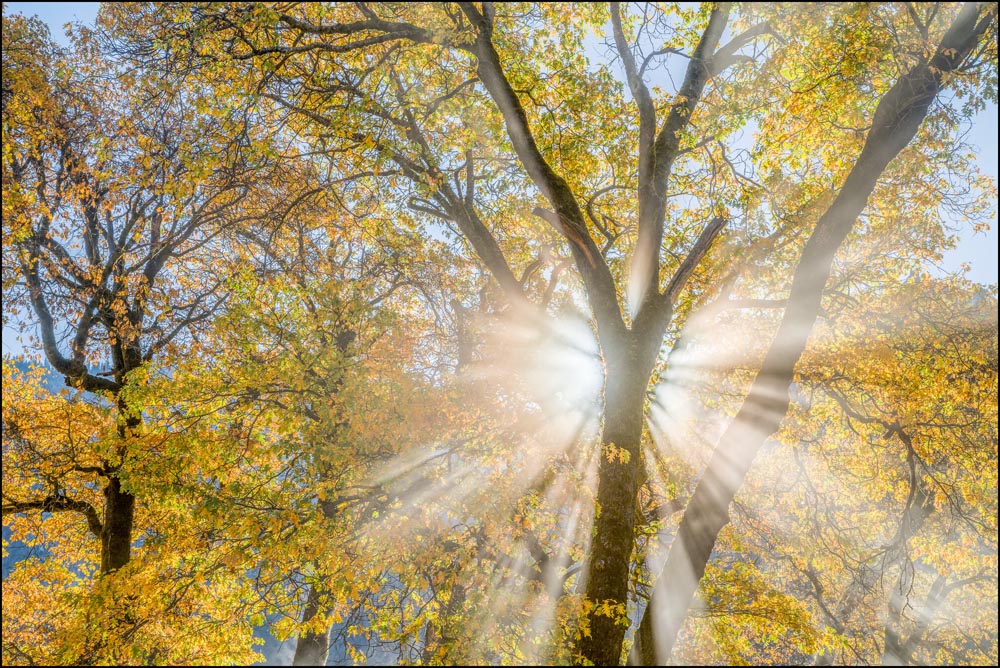
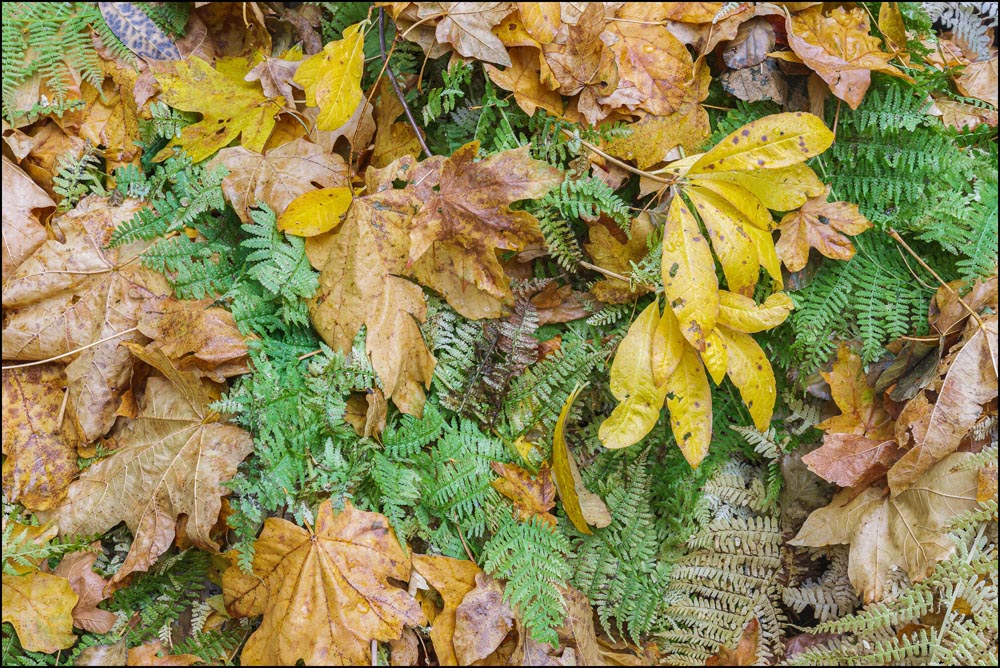
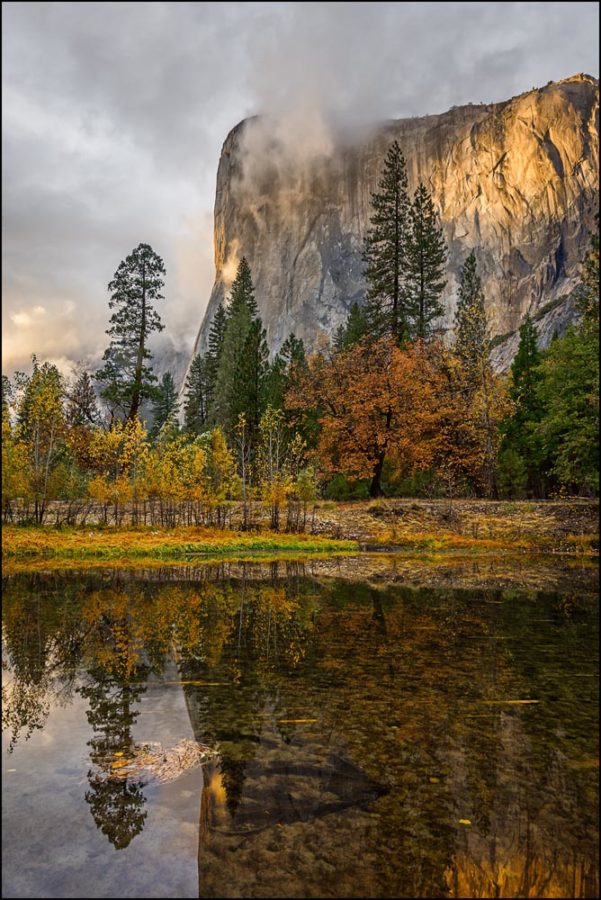
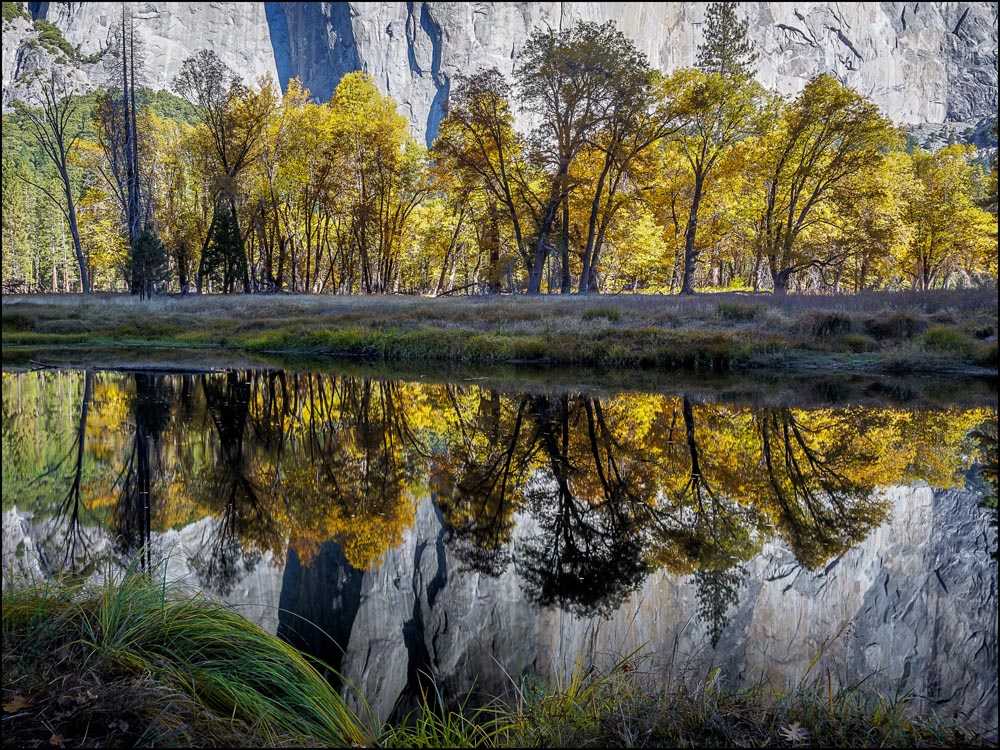
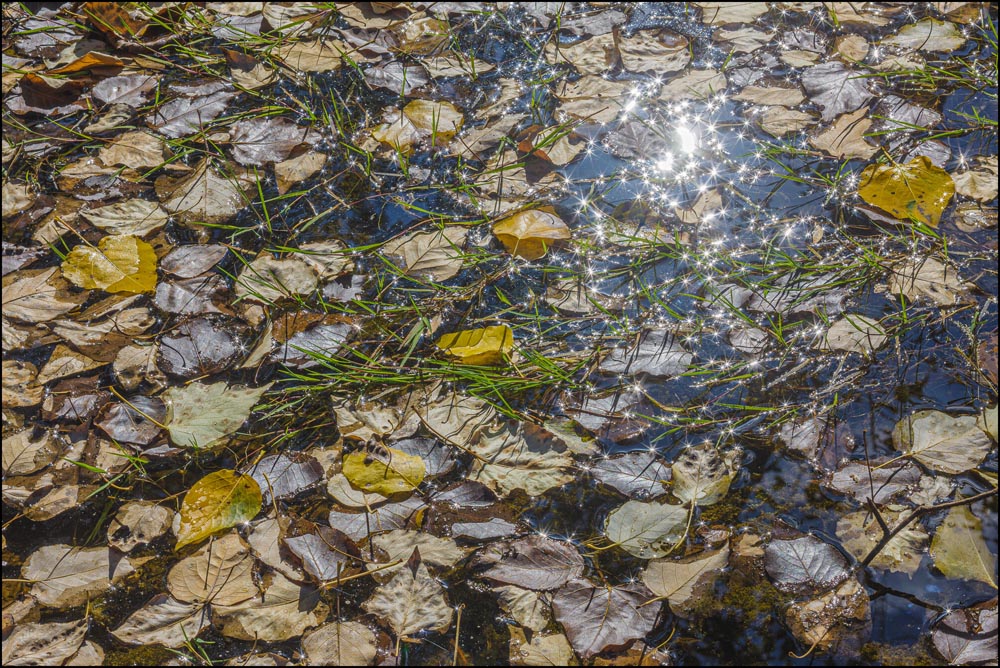
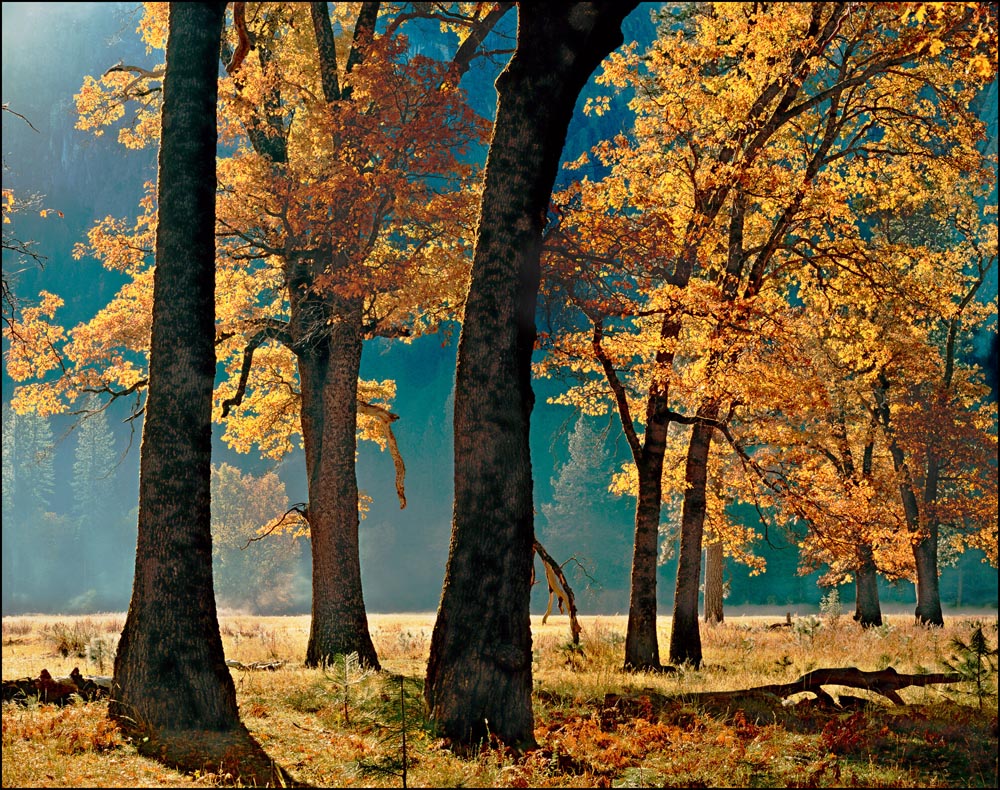
Autumn Light
What light is best for autumn photography? When I look through my favorite fall images, I see that I’ve favored two main types of light. The soft, even lighting of an overcast day, especially a rainy one, is prime light for forest scenes. Generally, the even tonalities make it easier to see the strong colors and details of leaves and branches of most forest scenes.
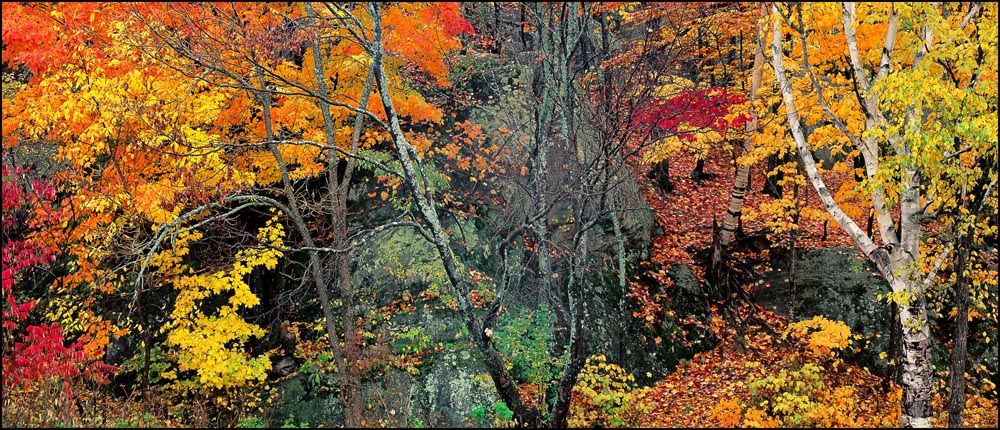
I captured Autumn Forest, Baxter State Park, Maine 1995 during a soft rainfall. I used my 4×5 camera and a 4×5 film back adapted for a 2:1 panoramic format. The colors were saturated and vibrant throughout the forest, but I located this section of woods where there was an especially good variety of color as well as strong graphic shapes. The moss-covered boulders, well-defined tree trunks, and freshly fallen leaves add to the quality of the image.
I made full-framed exposures as well as panoramic ones like this one. Although pleased with both, I especially liked how the rhythm of color and design is portrayed in the narrow format. The key quality in this photograph for me is the soft lighting provided by the rainstorm. That the leaves were wet and many of them had fallen to the forest floor add impact to the image. The hanging and fallen leaves blend somewhat in the composition, and this ambiguity gives the viewer pause to look more closely.
Another favorite lighting condition for me is backlighting. When light comes from behind colorful leaves, the glow can be magical. The best times to find good backlight is early morning or late afternoon when the sun is low in the sky. Although aiming your camera toward the sun can be a challenge, you can get great results with a little extra care. Lens flare can be a problem, so watch for that carefully in the viewfinder. When inside the forest, the simplest solution for flare is to use tree shadows to block the sun. The trees can become strongly silhouetted, the leaves brilliant, and the issue of flare eliminated.
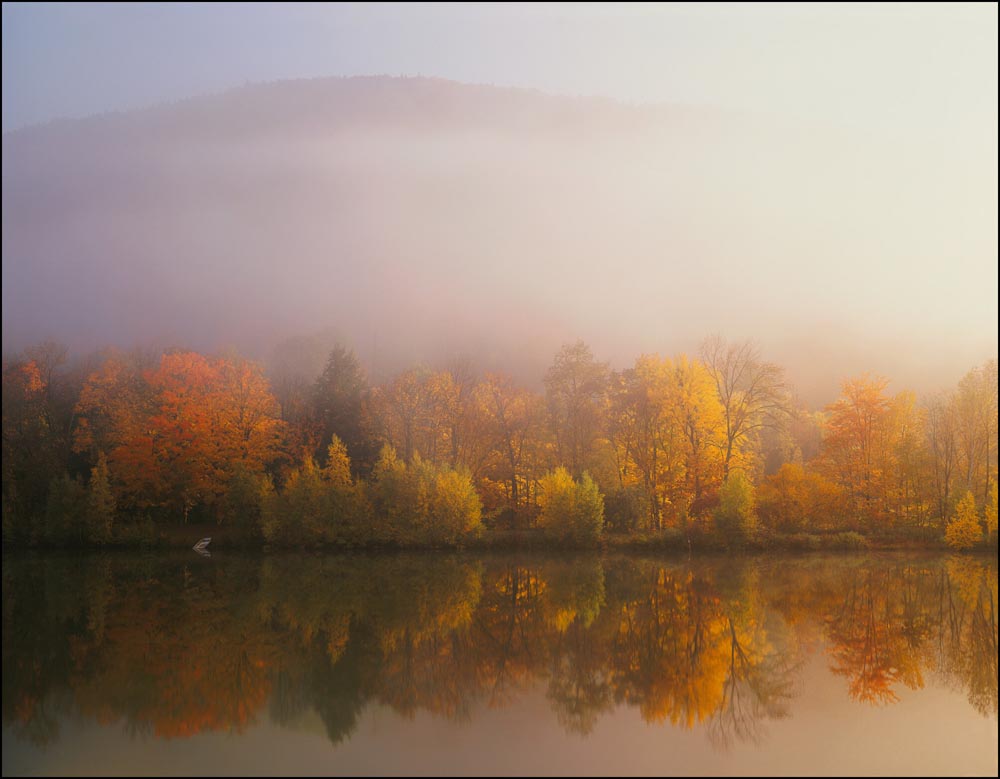
The photograph King’s Pond with Morning Mist was made at sunrise. My wife and I drove off from our motel in predawn darkness into the Green Mountains, hoping for great light and autumn color at this pond we had spotted the day before. In spite of the fact that I had no clue exactly when sunrise was, or where the sun would rise, a little luck goes a long way. A nighttime storm was just clearing at dawn, and the fog lifted to reveal this glorious scene.
The wide scope of this scene required my 90mm lens (about 24mm focal length on a 35mm full-frame format) on my 4×5 camera. I aimed the camera just far enough away from the sun to avoid direct sunlight, shaded my lens carefully, and photographed quickly in the rapidly changing light. This morning was so special, with great color and light, that I kept making images in the area for another hour or two.
When you plan your next autumn’s field sessions, think about the lighting conditions and about what thematic project you could develop or add to. Think about what you want to say with your images. Your unique viewpoint will be better revealed, and the concept behind the photographs will heighten your portfolio’s impact.
AUTUMN TAPASTRY PORTFOLIO
As an example of grouping images by theme, I’ve created a small group in the Collections module in Lightroom. For decades, I’ve been making images of forest scenes that isolate the branches and leaves. As I’ve collected more and more images, the fabric-like patterns often seemed like tapestries. I use this style during all seasons but here I’ve focused on fall textures and patterns. I have many Collections like this one that form the genesis for future portfolios or possibly books. By visually grouping images, it helps me see what I have in the present, and gives me ideas of how I might build upon my idea.
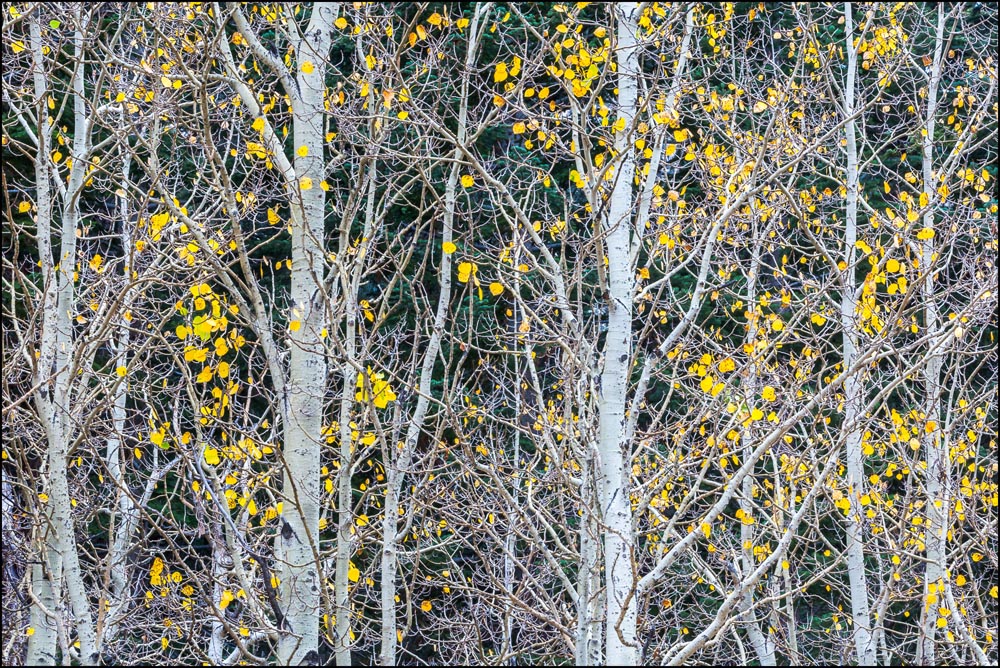
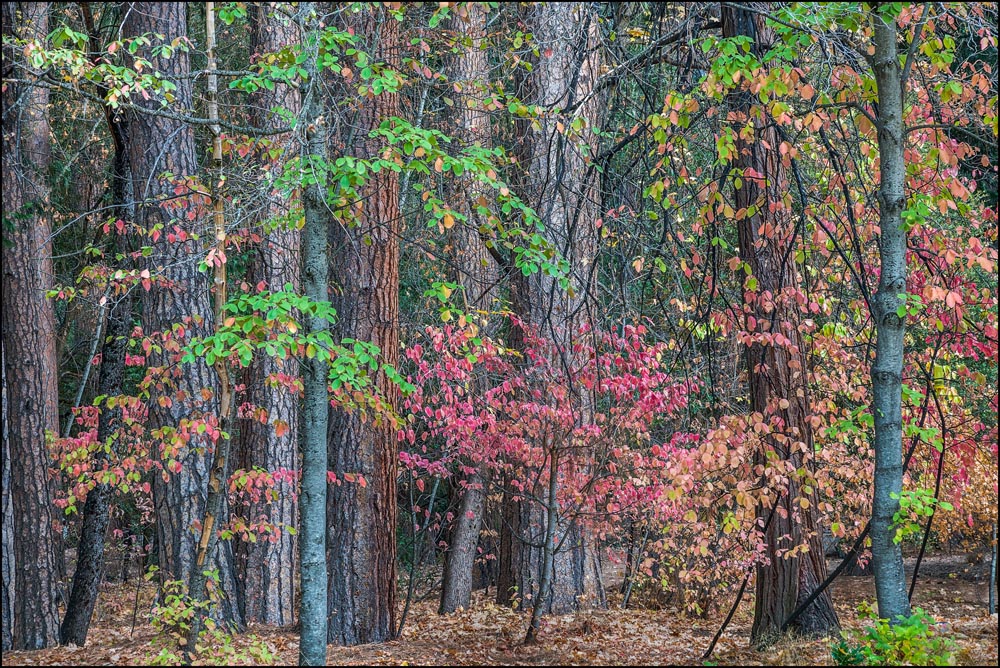
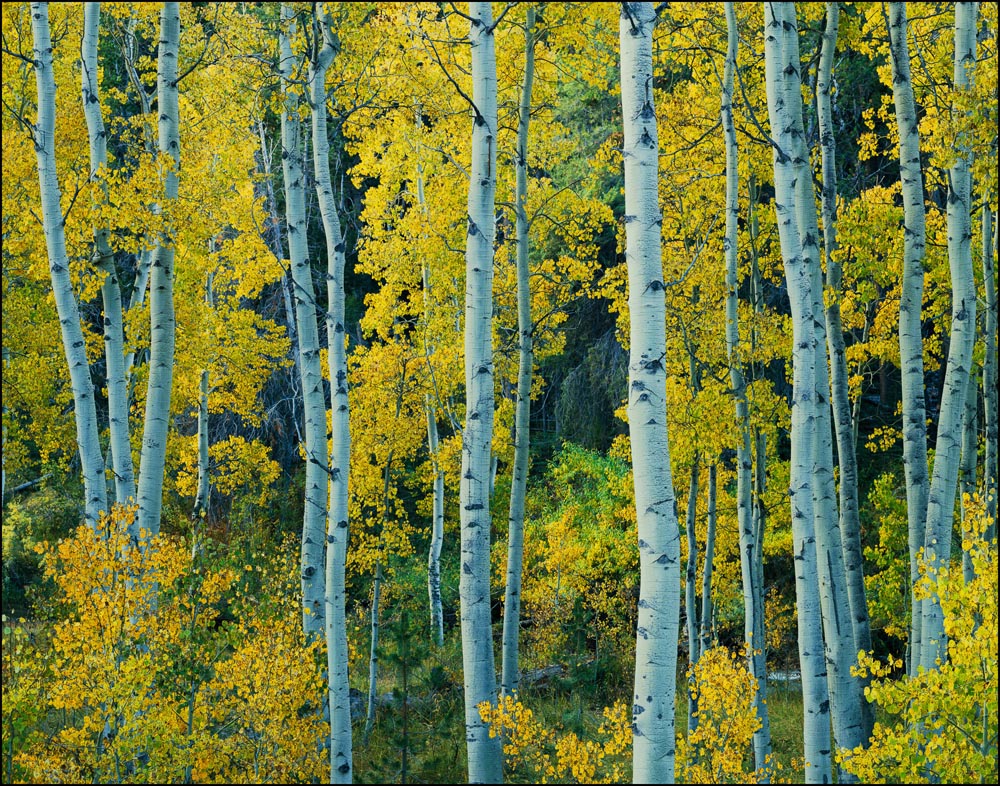
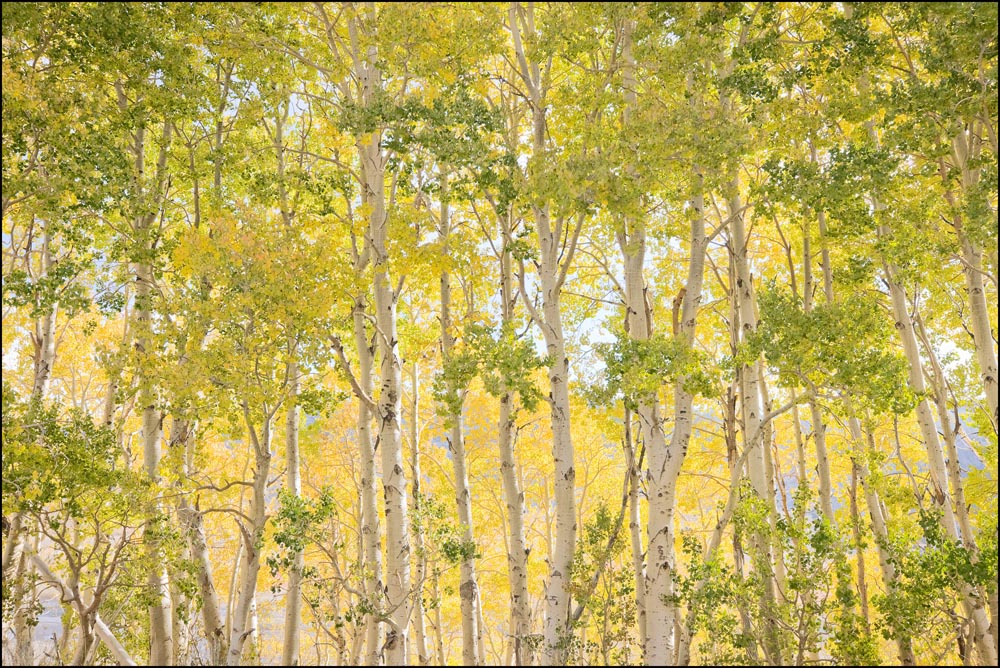
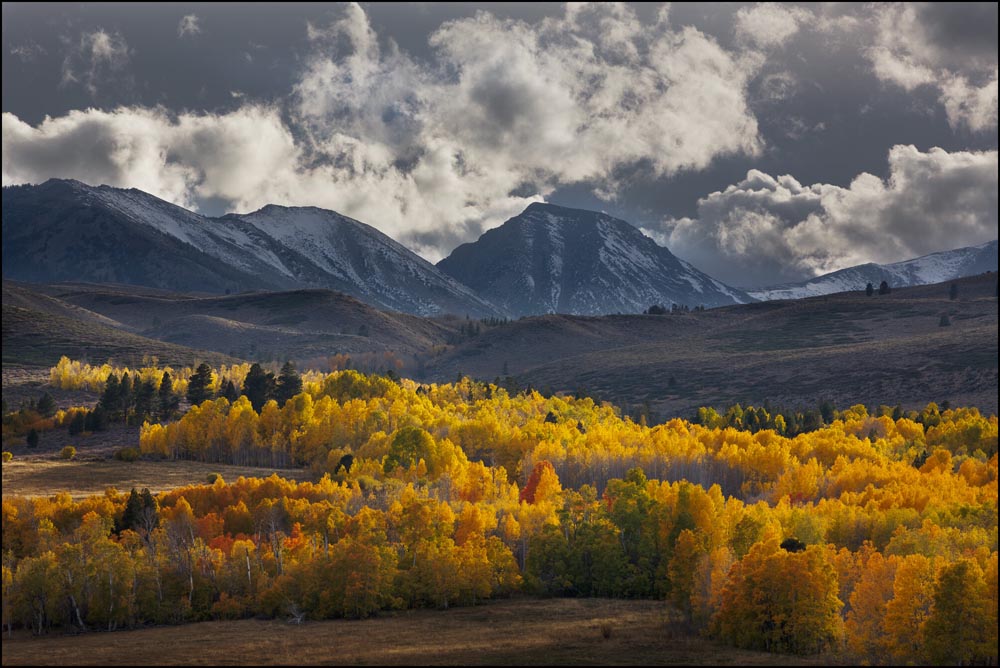
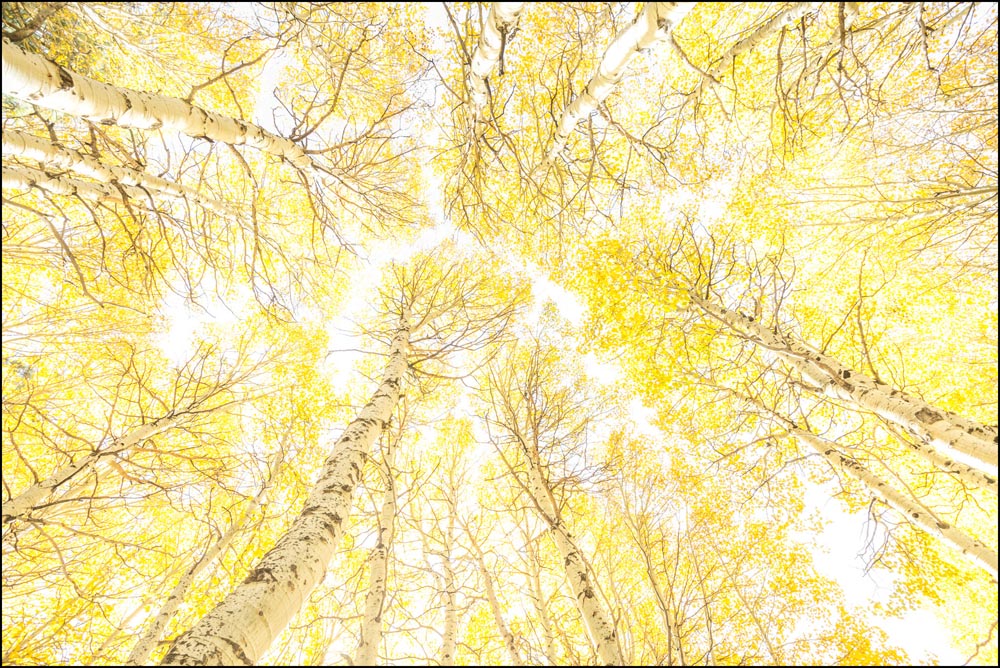
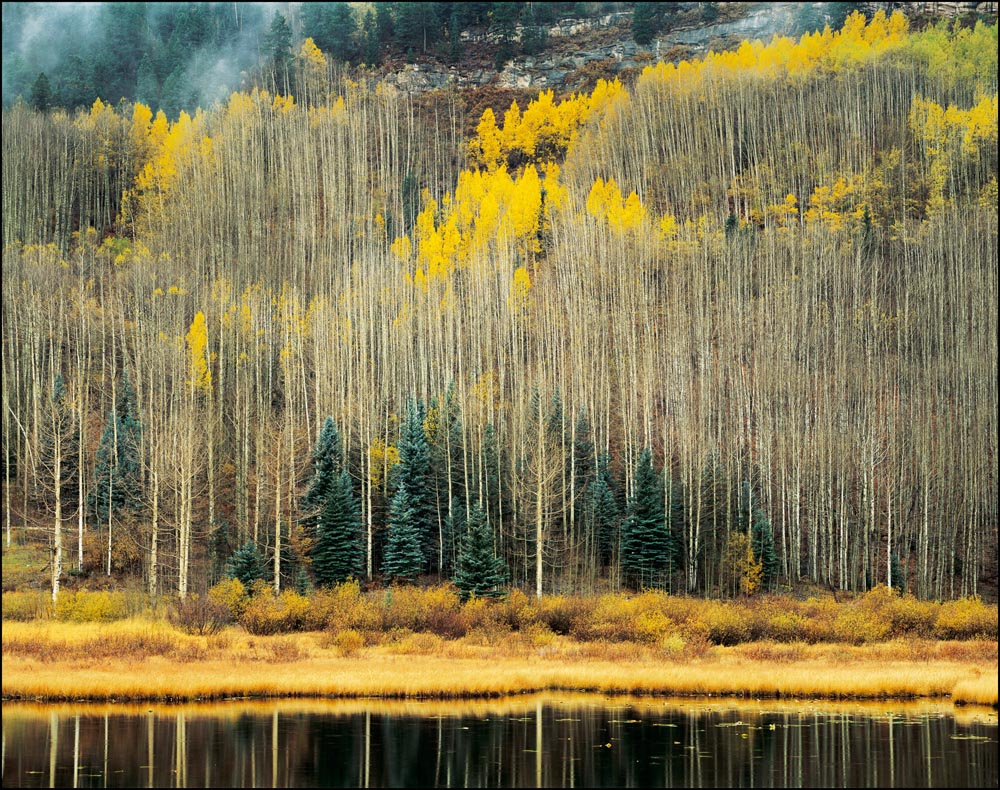
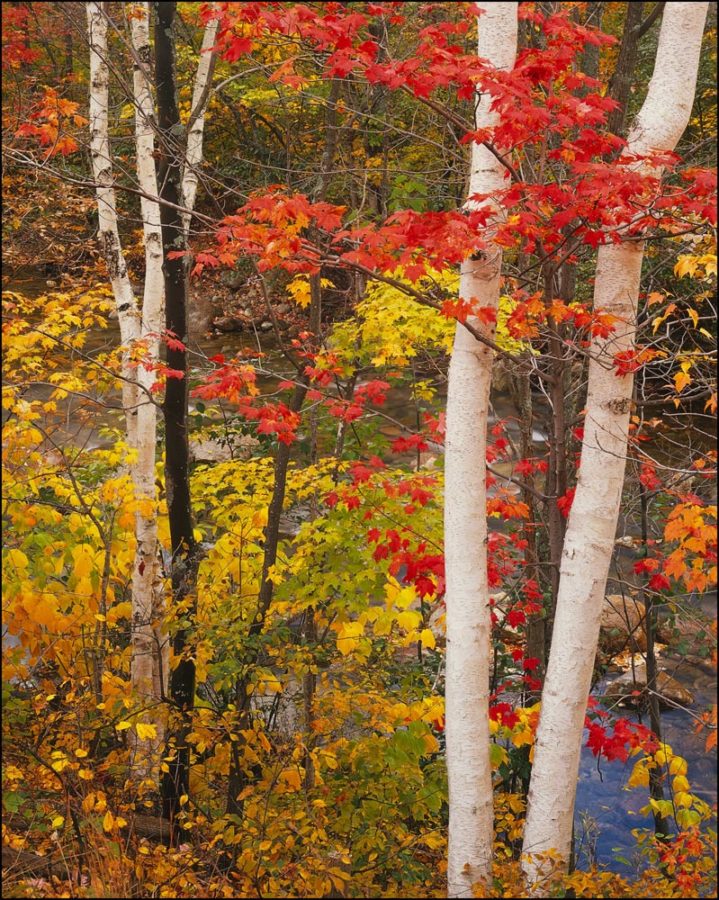
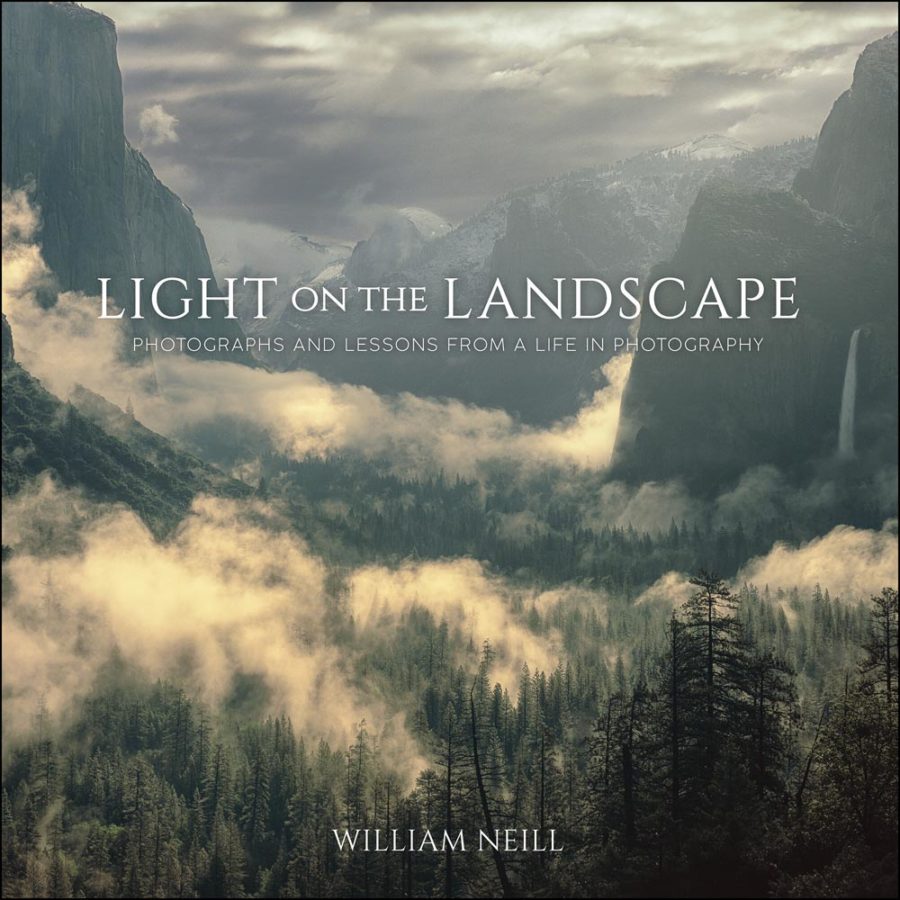
FROM THE PUBLISHER:
“For more than two decades, William Neill has been offering his thoughts and insights about photography and the beauty of nature in essays that cover the techniques, business, and spirit of his photographic life. Curated and collected here for the first time, these essays are both pragmatic and profound, offering readers an intimate look behind the scenes at Neill’s creative process behind individual photographs as well as a discussion of the larger and more foundational topics that are key to his philosophy and approach to work.
Drawing from the tradition of behind-the-scenes books like Ansel Adams’ Examples: The Making of 40 Photographs and Galen Rowell’s Mountain Light: In Search of the Dynamic Landscape, Light on the Landscape covers in detail the core photographic fundamentals such as light, composition, camera angle, and exposure choices, but it also deftly considers those subjects that are less frequently examined: portfolio development, marketing, printmaking, nature stewardship, inspiration, preparation, self-improvement, and more. The result is a profound and wide-ranging exploration of that magical convergence of light, land, and camera.
Filled with beautiful and inspiring photographs, Light on the Landscape is also full of the kind of wisdom that only comes from a deeply thoughtful photographer who has spent a lifetime communicating with a camera. Incorporating the lessons within the book, you too can learn to achieve not only technically excellent and beautiful images, but photographs that truly rise above your best and reveal your deeply personal and creative perspective—your vision, your voice.”
For more information and to purchase, see the links below and special discounts codes for you:
LIGHT ON THE LANDSCAPE [HARDCOVER, SIGNED, LIMITED EDITION]
Photographs and Lessons from a Life in Photography Use LIGHT20 for $20 off the hardbound!
Photographs and Lessons from a Life in Photography
Purchase Options: Print+eBook, just Print or just eBook
Use WNEILL35 for 35% off everything at else rockynook.com!
LIGHT ON THE LANDSCAPE – Collector’s Edition
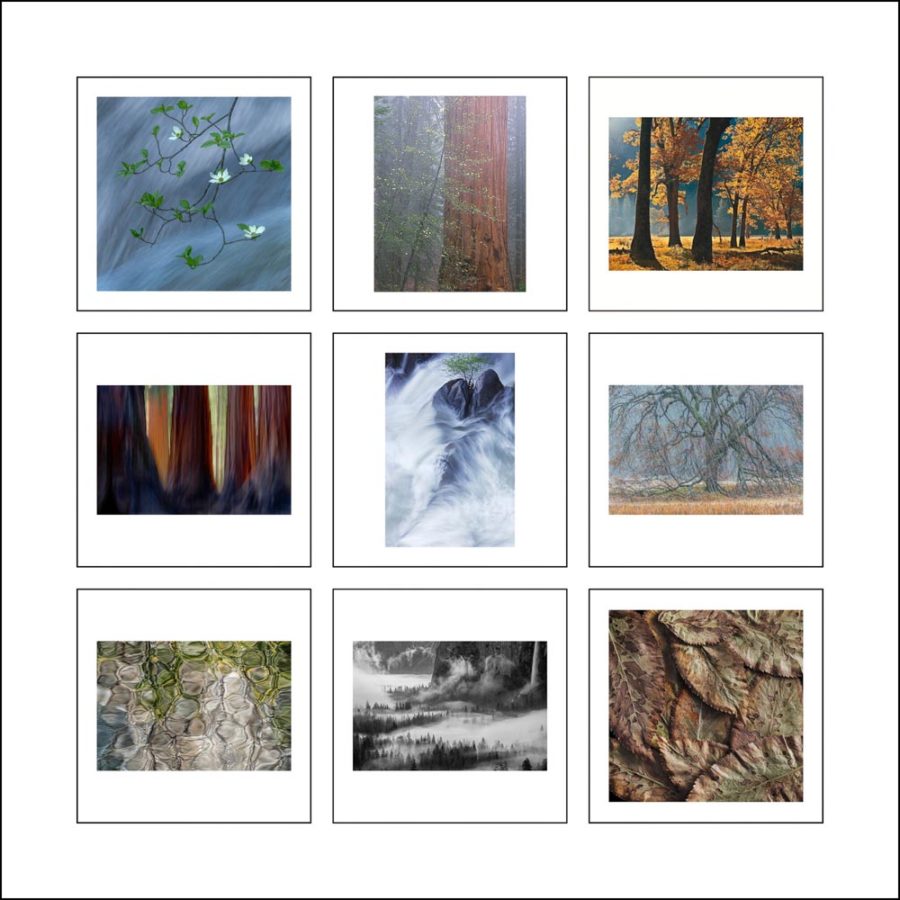
I am offering my new book LIGHT ON THE LANDSCAPE packaged with a signed print(s). The publisher agreed to print a small number of hardbound copies for those of you that prefer hardbound books over the softbound, “mass market” version. About 2/3 of the HB print run have been sold already.
I have selected nine images that are included in the book from which you can choose as shown above. The actual image size of each will be 10 inches on the long side, with a white border as seen in each image option below. The prints will be made by me here in my studio on high-quality inkjet paper with my Canon printer using archival inks.
For further info and to purchase, click here.
Artist’s Bio
William Neill, a resident of the Yosemite National Park area since 1977, is a landscape photographer concerned with conveying the deep, spiritual beauty he sees and feels in Nature. Neill’s award-winning photography has been widely published in books, magazines, calendars, posters, and his limited-edition prints have been collected and exhibited in museums and galleries nationally, including the Museum of Fine Art Boston, Santa Barbara Museum of Art, The Vernon Collection, and The Polaroid Collection. Neill received a BA degree in Environmental Conservation at the University of Colorado. In 1995, Neill received the Sierra Club’s Ansel Adams Award for conservation photography.
Neill’s assignment and published credits include National Geographic, Smithsonian, Natural History, National Wildlife, Conde Nast Traveler, Gentlemen’s Quarterly, Travel and Leisure, Wilderness, Sunset, Sierra and Outside magazines. Also, he writes a regular column, On Landscape, for Outdoor Photographer magazine. Feature articles about his work have appeared in Life, Camera and Darkroom, Outdoor Photographer and Communication Arts, from whom he has also received five Awards of Excellence. His corporate clients have included Sony Japan, Bayer Corporation, Canon USA, Nike, Nikon, The Nature Company, Hewlett Packard, 3M, Freidrick Grohe, Neutrogena, Sony Music/Classical, University of Cincinnati, UBS Global Asset Management.
His work was chosen to illustrate two special edition books published by The Nature Company, Rachel Carson’s The Sense of Wonder and John Fowles’s The Tree. His photographs were also published in a three book series on the art and science of natural process in collaboration with the Exploratorium Museum of San Francisco: By Nature’s Design (Exploratorium / Chronicle Books, 1993), The Color of Nature (Exploratorium/Chronicle Books, 1996) and Traces of Time (Chronicle Books/Exploratorium, Fall 2000). A portfolio of his Yosemite photographs has been published entitled Yosemite: The Promise of Wildness (Yosemite Association, 1994) for which he received The Director’s Award from the National Park Service. A monograph of his landscape photography entitled Landscapes Of The Spirit (Bulfinch Press/Little, Brown, 1997) relates his beliefs in the healing power of nature. Neill’s most recent book, William Neill–Photographer, A Retrospective (Triplekite Publishing, 2017) is a collection of his photographs taken over the past forty years. His latest book is Light on the Landscape (Rocky Nook, 2020), a collection of essays and images from his On Landscape column for Outdoor Photographer magazine.
You can see more of William’s work at WilliamNeill.com, and keep up with him on Instagram, Facebook, Twitter, LinkedIn, and Pinterest.



